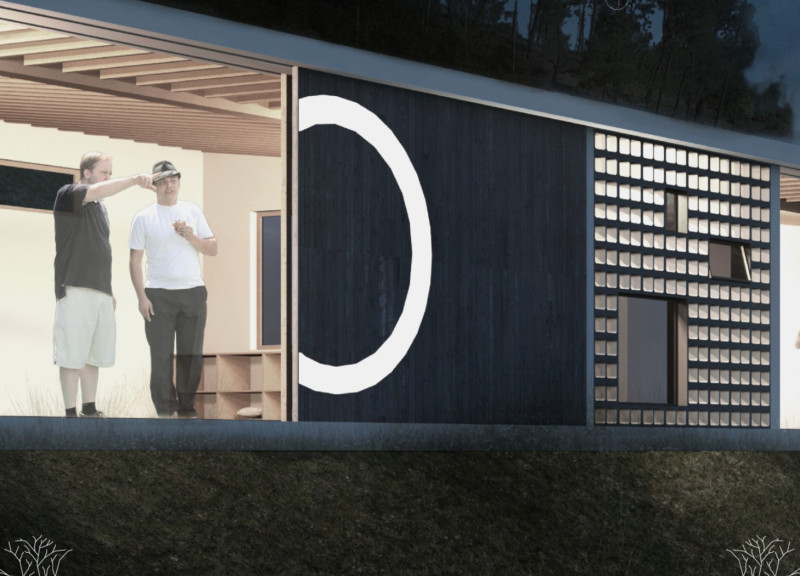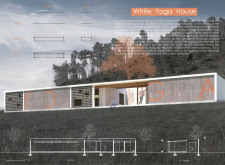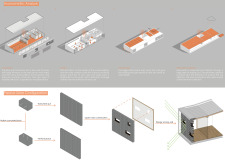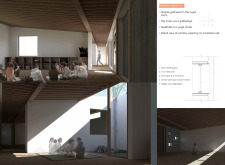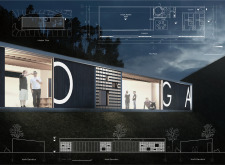5 key facts about this project
The White Yoga House is located in a calming landscape that emphasizes user comfort and functional spaces. Designed as a retreat for yoga practice, the building works to connect with its environment. The aim is to create a peaceful setting that allows users to focus on meditation and relaxation. The overall idea revolves around minimizing external distractions while using space effectively, promoting a harmonious atmosphere that balances both nature and function.
Spatial Organization
The central feature of the design is an atrium, which acts as the main hub for movement between various areas. This layout provides clear distinctions among spaces. The yoga room is placed in the quieter northern section to encourage calmness and concentration. Bathrooms positioned near the entrance improve accessibility, making it easier for users to navigate the facility.
Material Selection
The building primarily uses a mix of brick construction, particularly hollow bricks, which enhance thermal insulation and aid ventilation. This material choice reflects a strong focus on sustainability and energy efficiency. Passive solar walls are integrated throughout the design, alongside solar panels positioned on the roof, contributing to maintaining comfortable interior temperatures.
Architectural Features
Key elements include a sloping roof that serves dual purposes: collecting rainwater and providing visual interest. Large windows on the western side act as both a wind shield and a source of natural light. This aspect enhances the indoor atmosphere while inviting the surrounding landscape inside. The open courtyard walls promote ventilation, ensuring that the interior spaces remain fresh and connected to nature.
Details and Aesthetics
The exterior is painted white, aimed at maximizing reflection of sunlight and reducing heat absorption. This choice creates bright, airy spaces that enhance the overall experience for users, especially within the yoga room. Thoughtfully placed design elements work together to foster a peaceful and inviting environment, highlighting a balanced relationship between the built structure and the natural surroundings.


